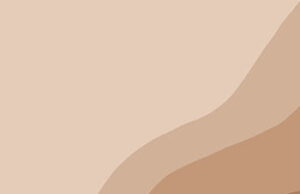Staff draw upon worldwide teaching experiences

CFHS teachers John and Patricia Black, Scott Bohlmann, Jeff Hartman and Chad Van Cleve previously taught at overseas schools. They experienced differences in cultures as well as curriculums compared to typical American schools.
Spanish teacher Patricia Black taught at a public school in Argentina. “Public schools do have higher standards, but not as high as private schools.” Black said.
The school at which Black taught differed greatly from schools in the States. “I say probably one of the main differences is there is no emphasis on extracurricular activities. The main goal is to teach the core classes, so there’s not football or soccer teams that belong to schools. Students do not have electives,” Black said.
Argentinean students are required to take at least five years of foreign languages as well.
“The other big difference is that people wear uniforms to go to school,” Black said. She also commented that girls cannot wear makeup. “You go to school to learn,” Black said.
Grading in Argentinean schools was also much more strict. “Normally, there are no retakes for tests. You get what you get,” Black said. At the school where Black taught, the grading is on a ten-point scale, with ten as the highest. To be considered a passing grade students must receive 60-70 percent depending on the teacher, and if students don’t pass, they need to retake the class.
Yet another difference between schools is that students go home for lunch. “They never eat at school in public schools,” Black said. “Lunch is the main meal of the day, and it is kind of expected that you sit down for lunch,” Black said.
Black’s husband, science teacher John Black taught for three years in Argentina as well, though at a private school rather than public. Black found the transition from American schools to the international Argentinean school nearly effortless. “I got the job a month before we left and was at school a week after we got there. My issue was that teachers meetings were in Spanish,” Black said. Black recalls everyone speaking English well at the school.
The science curriculum did not differ much from that of the science curriculum in the United States. “It was not an unusual curriculum. We met every other day in lecture and once or twice a week for lab,” Black said. Unlike in typical American schools, this Argentinean private school has required lab days.
Black described the academic drive of his Argentinean students. “They prepare for tests more than students here,” Black said. Along with the extra preparations, schools also do not have organized sports. Students can still participate in sport clubs, but they are separated from the school.
Their focus could be caused by the International Bacclaureate Diploma Program, or IB, that the school participates in. IB is an academically challenging and balanced two-year program. It requires students to take six academic courses or five academic and one art course annually at a standard or higher level. Other requirements for the program include the extended essay, theory of knowledge and creativity, action and service. At the end of the semester, students take a two-and-a-half-hour-long biology test administrated by a third party, never their biology teacher. At the end of the program, IB students must pass a written examination to take their credentials to any college in the world.
Social studies teacher Chad Van Cleve also taught at an IB school. He taught European history in Rotterdam, Netherlands, at an international school. Despite its location, the school was not at all connected to the Dutch system.
The school included the children of American servicemen, embassy men and those who wanted their kids to receive an English education. “I could be in a class of 16 or 17 kids, and have 13 countries represented in it,” Van Cleve said.
Van Cleve also described the focus of IB students. “They knew they needed to compete to get into colleges where they didn’t have an American education,” Van Cleve said.
An American education is typically expected where most of Van Cleve’s IB students wanted to attend college. “Most of the students, whether they were from China or Korea, wanted to go to college in the U.S.,” Van Cleve said. Most of these students aimed for Ivy League colleges,
but for the most part, many aspired only to attend a typical American university.
Science teacher Scott Bohlmann taught on the island of Okinawa, Japan, at a Department of Defense school system. For the most part, the students of this school came from Air Force families. “In Okinawa there’s still quite a bit of tension between Okinawans and the U.S. military, and obviously there are normal cultural differences with Japanese culture.” Bohlmann said.
“A lot of it stems from World War II. Okinawa was invaded by Japan, and it brought American troops to the island, and they stayed because of post war treaties,” Bohlmann said.
“They are part of the country, but they still see themselves as their own country even though they’re not,” Bohlmann said.
“As long as you’re polite and respectful to people, the interactions are nothing but positive,” Bohlmann said.
“By the time they’re in high school, they’re used to it. They absorb a new kid a lot quicker,” Bohlmann said.
“They know they only have two years together before they’re deported to other bases. They make a bigger deal out of the normal school activities,” Bohlmann said.
Bohlmann recalled how although the Okinawan school had a bit more leniency than American schools and no set curriculum, his classes covered almost the same material.
Science teacher Jeff Hartman taught 7th grade in a public school in Guam. He discovered the job at an overseas job fair at U.N.I.
Being a U.S. territory, there was not too much difference in the systems. Hartman remembers the school being different physically, similar to a school in California; all classes opened up outside.
Unlike the U.S. however, Hartman’s school was much stricter with discipline. “When I was there, there was some corporeal punishment,” Hartman said. One example of such punishment included making the offending students stand in the hot sun an hour.
Hartman also recalls a difference in culture where he taught. “The culture was more family-orientated,” Hartman said. “We lived in a Filipino community, and extended families all lived in the same compound.”
Hartman taught a diverse group of students. “I had students from all different cultures: Filipino, Micronesian, Chamorro and military dependants,” Hartman said.
The students also came from a variety of social classes as well. “I had students living in tin shacks with dirt floors and others living in nice houses,” Hartman said.









You must be logged in to post a comment Login